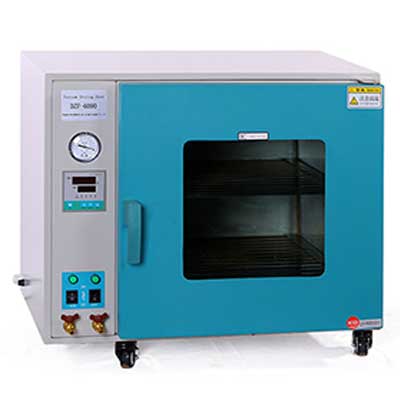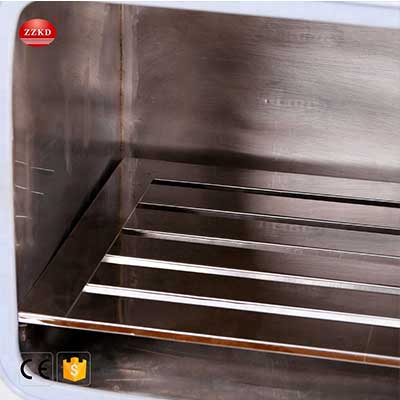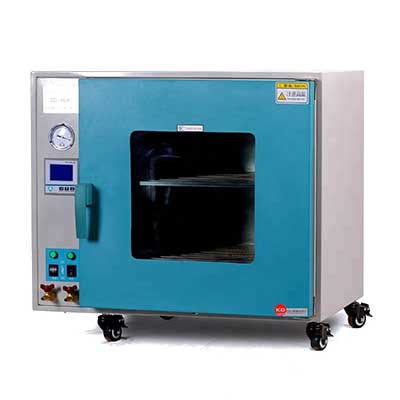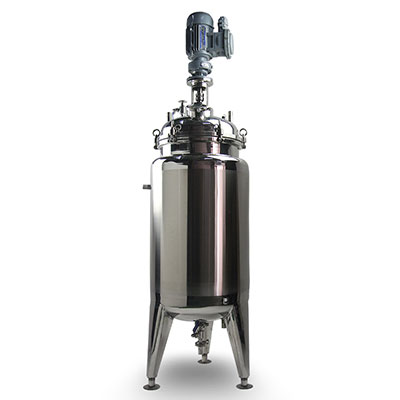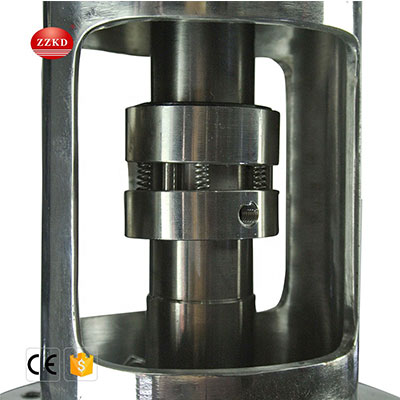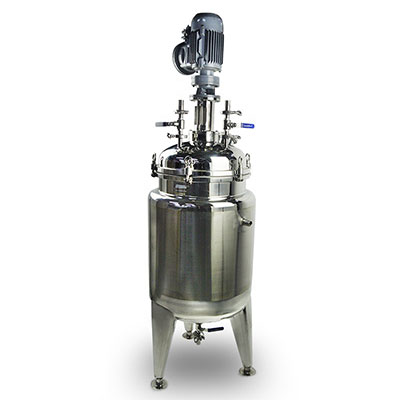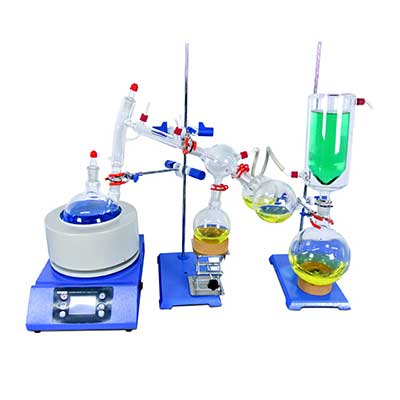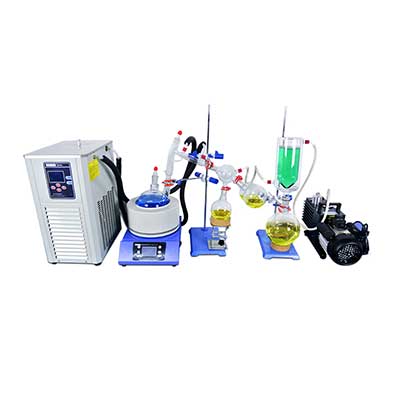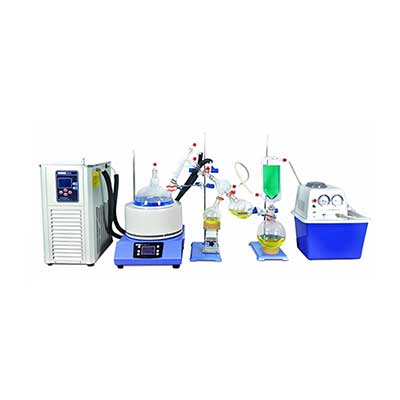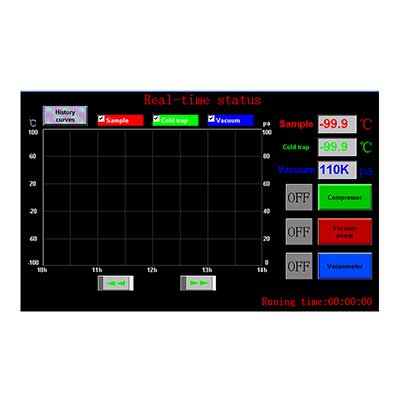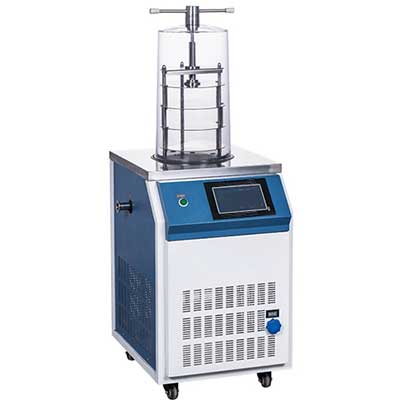-
WhatsApp
-
Email
The distillation flask is a round-bottomed or eggplant-shaped flask with a regular ground-neck interface, which is connLab Mini Vacuum rotary evaporator 50l For Saleected to a decompression pump by way of a high-reflux serpentine condenser, and the other opening of the reflux condenser is connected to a receiving flask with a floor neck for use Receive evaporated organic solvent. There is a three-way piston between the condenser tube and the decompression pump. When the system is connected to the ambiance, the distillation flask and liquid contact flask can be removed to transfer the solvent. When the system is linked to the pump decompression, the system must be in a state of lowered strain. When in use, the strain must be decompressed first, after which the motor have to be turned on to rotate the distillation flask. When completed, it must be stopped first and then vented to the environment to stop the distillation flask from falling down during rotation. As a warmth supply for distillation, it's usually equipped with a corresponding constant temperature water tank.
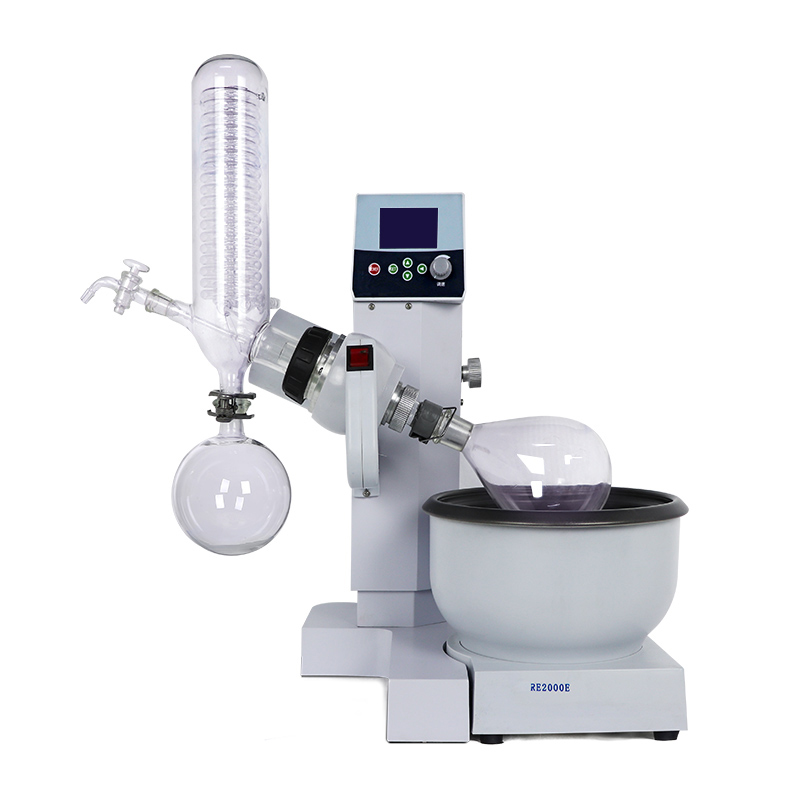
The primary elements of rotary evaporator:
1. Rotate the motor to drive the evaporating flask containing the sample via the rotation of the motor;
2. Evaporation tube, the evaporation tube has two features, firstly, it performs the position of pattern rotation support axis, and secondly, through the evaporation tube, the vacuum system sucks the sample ;
three. The vacuum system is used to scale back the air strain of the rotary evaporator 50l for sale
system;
four. Fluid heating pot, usually heating the pattern with water;
5. Condenser tube, use double coil condenser or different condensing brokers similar to dry ice and acetone to condense samples;
6. Condense the sample collection bottle, and the sample enters the collection bottle after cooling down.
A mechanical or motorized mechanism is used to quickly raise the evaporating flask onto the heating tray.
The lab mini vacuum rotary evaporator system can be a easy water aspirator immersed in a cold water bath, or it can be a mechanical vacuum pump with a cooling tube. Evaporating and condensing glass assemblies can be simple or complex, depending on the objectives of the distillation and the characteristics of the solvent being distilled. Different commercial kits will include some primary features, and modern kits often add features corresponding to digitally managed vacuum pumps, digital show of heating temperature, and even steam temperature.
The working principle of rotary evaporator:
Through electronic control, the flask is rotated at a constant velocity at an appropriate pace to extend the evaporation space. The evaporation flask is underneath adverse pressure by means of a vacuum pump. The evaporating flask is placed in a water bathtub for constant temperature heating whereas rotating, and the answer in the flask is heated, subtle, and evaporated in the rotating flask underneath unfavorable stress. Laboratory rotary evaporator system may be sealed and decompressed at 400-600mmHg; The solvent in the distillation flask is heated with a heating bath, and the heating temperature can be close to the boiling level of the solvent; At the same time, it can rotate at a pace of 50-160 rpm, the solvent is shaped into a skinny film, and the evaporation space is increased. In addition, underneath the action of the high-efficiency chiller, the recent steam can be shortly liquefied and the evaporation rate could be accelerated.
Lab mini vacuum rotary evaporator are primarily used for steady distillation of a appreciable quantity of unstable solvents underneath lowered pressure, such as distillation extracts and receiving liquids during chromatographic separation. The primary principle of the rotary evaporator 50l for sale
is vacuum distillation of the distillation flask under steady rotation. As a heat supply for distillation, it's often outfitted with a corresponding constant temperature water tank.
Instructions:
1. Turn on the low temperature coolant circulation pump. Please take note of press the facility button after which press the cooling button, and begin the cycle after the temperature is reduced to the specified temperature.
2. Turn on the water pump to flow into the water.
three. Install the distillation flask and safe it with clips. Turn on the vacuum pump and begin spinning after a certain vacuum. four. Adjust the peak and rotation pace of the distillation flask, and set the appropriate temperature of the water bath.
5. After steaming, first stop the rotation, then openatmosphere, then stop the water pump, after which remove the distillation flask.
6. Stop the low-temperature coolant circulation pump, stop the heating of the water tub, flip off the water pump to circulate the water, pour the solvent into the receiving bottle, wash the buffer ball, and receive the bottle.
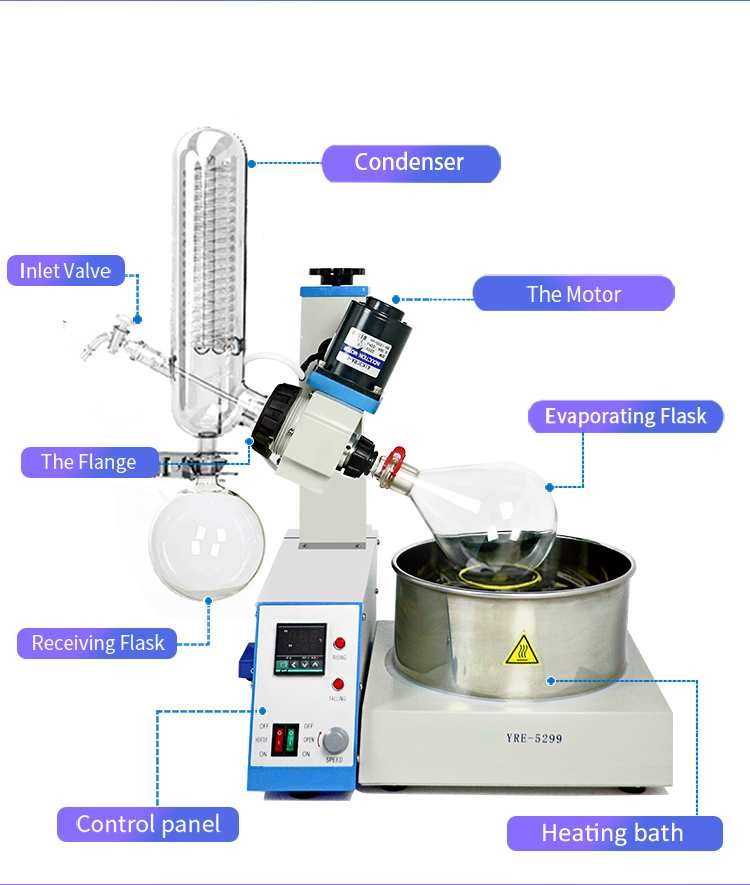
Precautions:
1. When using it, first make a small vacuum (about zero.03MPa), and then turn on the rotation to stop the distillation flask from slipping, when it stops, stop the rotation first, maintain the distillation flask together with your hand , open the atmosphere, and stop when the vacuum diploma drops to about zero.04MPa Vacuum pump to forestall the distillation bottle from falling and sucking backwards.
2. Each interface, sealing floor, sealing ring and joint must be lined with a layer of vacuum grease earlier than installation 3. Water should be added before the heating tank is turned on, and dry burning without water isn't allowed .
4. If the vacuum degree is just too low, please take notice of check the air tightness of each joint, vacuum tube and glass bottle.
5. When air-sensitive substances are rotary evaporated, join a nitrogen balloon to the exhaust port, first move a burst of nitrogen gasoline, exhaust the air into the rotary evaporator, after which connect the pattern bottle for rotary evaporation. After evaporated, launch nitrogen to increase strain, then turn off the pump, and then remove the sample bottle and seal it. 6. If the viscosity of the sample could be very large, the rotation speed should be reduced and slowly rotated by hand, in order that a brand new liquid degree could be fashioned and the solvent can be evaporated.
How to use the laboratory lab mini vacuum rotary evaporator: first manually turn the lifting screw, turn it clockwise to the bottom point ~ connect the rotary evaporator 50l for sale and hold it with a clip ~ activate the change ~ regulate the speed to about 100 (the pace is between 60 and 150) ~ Adjust the temperature to about 40 levels, after which enhance the temperature to about 60 levels after the temperature is steady ~ Take out the rotary evaporation liquid and put it within the oven to be dry (the complete process takes about an hour)


